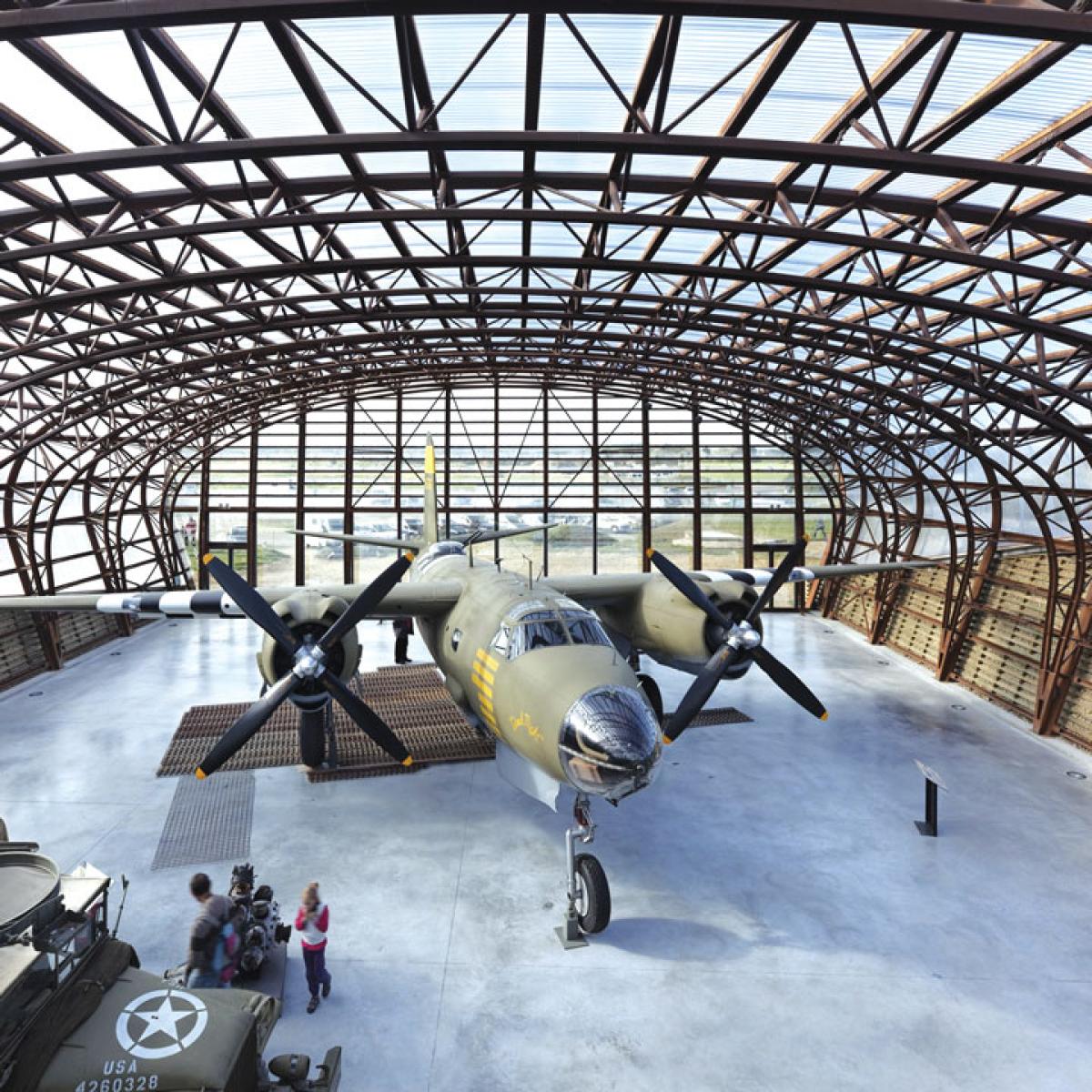Success on D-Day would not have been possible without the Allied naval operations on and off Utah Beach, the codename for the westernmost landing area between Pouppeville and La Madeleine, France. Minesweepers cleared the English Channel; battleships and cruisers hammered enemy defenses; and landing craft brought men, materiel, and killing machines onto the beach.
The 865 ships of Task Force U delivered more than 20,000 men across the Channel to Utah Beach on 6 June 1944, the first day of the invasion. Force U arrived offshore at 0125 after following beacons through mined waters, and opened fire in the predawn darkness. When German coastal artillery fired on the fleet, the ships responded with overwhelming firepower. The USS Nevada (BB-36) destroyed a German 210-mm gun in its concrete casemate, while the USS Quincy (CA-71) hit targets with precision, thanks to a naval forward observer who’d parachuted in with airborne troops during the night. The intense bombardment lasted less than an hour, opening the way for the landing troops.
The newly remodeled Utah Beach Museum honors the actions of Allied sailors and soldiers that day. Founded in 1962, it was the result of the efforts of Michel de Vallavieille, the mayor of Sainte Marie du Mont, who had been wounded on D-Day during the fight for a German artillery battery at Brecourt Manor. A 2011 renovation tripled the museum’s size. In a wing dedicated to sailors, several panels describe Task Force U, its commander, Rear Admiral Don Moon, and the tools that permitted the Navy to complete the mission. An exhibit on the assault wave’s command group includes a shirt belonging to Private First Class Tommy Harbour, who lowered the ramp and manned the machine gun on a landing craft, vehicle, personnel (LCVP), as well as an oversized helmet designed for radio use worn by sailor Steve Bucksan on board the USS Tuscaloosa (CA-37).
A glass case houses a model of a flat-bottomed landing ship, tank (LST), which sailors said stood for “Large Slow Target,” and an illuminated buoy used to guide landing craft and ships through the enemy minefield. Other model ships include the SS Jeremiah O’Brien, one of two surviving Liberty ships from a fleet that once numbered 2,710. A wall filled with the silhouettes of various landing craft gives visitors an idea of the sizes and capabilities of the amphibious boats that filled the Channel that day. There is also a copy of the original report of the sinking of the USS Rich (DE-695), destroyed by a German mine on 8 June 1944.
One of the plaques along the walls pays tribute to the preinvasion nighttime reconnaissance missions near Utah Beach. The missions, codenamed Hardtack 21 and 24, were conducted by British and French commandos, respectively, to gain intelligence on enemy obstacles and mines.
The museum also has a special tribute to the Free French Naval Forces (FNFL), which General Charles de Gaulle began building in 1940 after France surrendered to Germany. By 6 June, the FNFL was the third-largest Allied navy in the invasion fleet; its flag was emblazoned with a Cross of Lorraine, the symbol of Free France. FNFL exhibits include a flare gun, signal lights, a Free French sailor’s military papers, and a model of the French corvette Aconite.
Visitors can see two actual Allied landing vehicles: a landing vehicle tracked (LVT-2) “Water Buffalo” and an LCVP. The LVT-2 could carry 20 infantrymen and a machine-gunner or three tons of cargo. It was an improved version of the LVT-1, with better suspension and buoyancy, and could reach speeds of 8 mph in water and 20 mph on land. This LCT-2 transported troops to Utah Beach and through the marshes behind the beach throughout 1945.
The LCVP featured in the museum is believed to be the only original still in existence that participated in the D-Day landings. Also known as Higgins boats, they could carry 26 men at 14 mph (12 knots) and were the primary landing craft for the initial assault. On a nearby wall is a soldier’s firsthand account of being delivered to shore on board one, in which he recalls, “A nauseating mix of diesel fumes, gun smoke, and salt-laden air made my breathing difficult.” There is also a mannequin adorned in a waterproofed uniform, which the coxswains wore while piloting landing craft to shore and back.
Other exhibits revolve around German defenses and occupation, air and ground campaigns, the link-up between the American infantry and airborne troops, and Utah Beach’s continuous use as a port.
Utah Beach Museum
50480 Sainte-Marie-du-Mont, France
Phone: +33 (0)233715335
Open: 1000–1800 from 1 October to 31 May; 0930–1900 from 1 June to 30 September; 1000–1800 from 26 December to 5 January.
Admission: 8€ (approximately $11) for adults, 3.50€ for children under 15, 6€ for groups, and 3€ for school groups. World War II veterans are free.
www.utah-beach.com
The U.S. Navy Normandy D-Day Monument
While not technically part of the Utah Beach Museum, the town of Sainte-Marie-du-Mont’s U.S. Navy Normandy D-Day Monument is still within short walking distance. Sculpted by artist Stephen Spears, the 12-foot high memorial depicts two sailors and a Navy officer working together to invade the Normandy beaches. Since its dedication on 27 September 2008, it has provided an added draw to history buffs touring the area, as well as a reminder of U.S. naval sacrifice in the Allied invasion of Normandy.



